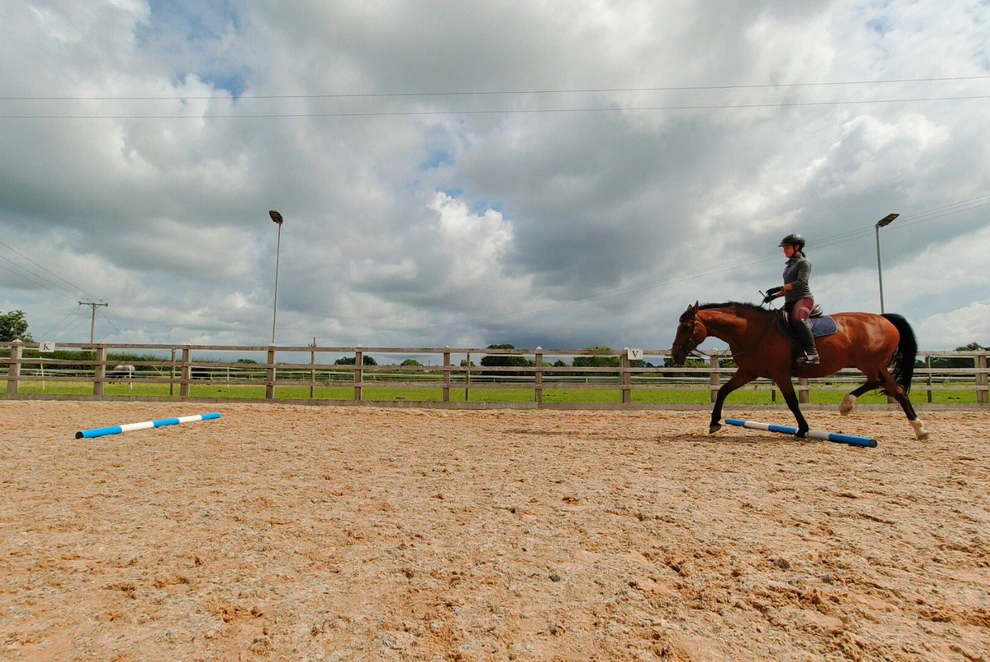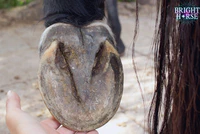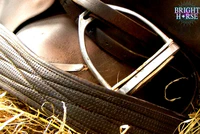The Power of Positive Posture: A Guide to Rehabilitation for Horses with Hind Limb Issues
Rehabilitation for horses recovering from hind limb issues is a complex process that requires a thoughtful, balanced approach. One powerful and often overlooked aspect of equine rehabilitation is something I have created that I call ‘positive posture’. By focusing on correct posture, groundwork, and gentle mobility exercises, we can help our horses regain strength, flexibility, and comfort without introducing unnecessary strain. In this guide, we’ll explore how positive posture can support the rehabilitation process, the importance of retraining movement responses, and the exercises that promote lasting health and performance.
Training the Four Basic Mobility Responses
In any training or rehabilitation program, understanding and guiding a horse’s fundamental mobility responses is essential. These responses—stop, go, turn the forequarters, and turn the hindquarters—are the foundation of movement and play a critical role in developing positive posture. Typically, horses learn through negative reinforcement, responding to cues or pressure from the handler, but in rehabilitation, each response needs to be approached gently and purposefully to avoid stress or strain on the injured hind limbs.
Horses may not always be able to perform certain tasks, especially if they’re recovering from an injury or dealing with medical issues. If we approach their fitness and rehabilitation using traditional methods, we might unknowingly ask them to do something they’re not physically ready for. When this happens, they often compensate with poor form, engaging the wrong muscles instead of strengthening the ones we want to develop.
That’s where positive posture comes in. With positive posture techniques, we can ask our horses, “Can you do this?” If they’re able to perform the task with good form, we reward them. But if they can’t, we simply let it go without forcing the issue. By respecting their limits, we avoid the risk of them performing the task incorrectly and learning poor habits. Horses are one-trial learners—if they practice a movement incorrectly even once, they’re likely to repeat it that way. In rehabilitation, this is exactly what we want to prevent to support their healthy, balanced recovery.
The Four Core Responses
- Stop: Encouraging the horse to halt smoothly and squarely engages muscles evenly, preventing over-reliance on the forelimbs and promoting balance.
- Go: Developing a calm, forward movement helps prevent compensation patterns that strain the hindquarters.
- Turn the Forequarters: Controlling the movement of the forelegs independently from the hindquarters improves balance and symmetry, which is vital during recovery.
- Turn the Hindquarters: Controlled hindquarter turns teach the horse to balance weight between both hind legs, gradually strengthening the weaker limb.
Training each of these responses independently, rather than relying on the horse’s natural tendency to engage all parts at once, can prevent overcompensation by uninjured limbs. Using both direct and indirect turns, where rein pressure varies in proximity to the horse’s neck, also helps refine control, teaching the horse to engage its muscles thoughtfully and evenly.
Straightness and Crookedness
Straightness—achieving alignment of the horse’s hind legs with its forelegs—is fundamental to both recovery and long-term soundness. Horses naturally have a slight crookedness, which can be intensified by injury, certain training habits, or even the asymmetry of the rider. For horses recovering from hind limb issues, addressing this crookedness and developing straightness is critical for balanced rehabilitation and preventing further strain.
Traditionally, many people use circle work, such as lungeing, as a core part of equine rehabilitation. However, if you’re currently doing this, I’d recommend stopping, as circle work is actually incredibly challenging for horses, especially those in recovery. Even for a healthy horse, moving in a circle with proper bend and alignment is a complex skill that requires strength and flexibility. For a horse recovering from an injury, the demands of circle work can be overwhelming, leading to compensation patterns, strain, and even setbacks in their healing process.
Instead, the focus in rehabilitation should be on straight lines. Working in straight lines allows the horse to move evenly, engaging its muscles symmetrically without the added challenge of lateral flexion. Straight-line work helps the horse build strength, balance, and confidence in its natural movement patterns. Once the horse has regained strength, coordination, and comfort in straight work, we can gradually introduce circles as part of their training progression. But until then, keeping movements linear is essential to ensure they rebuild with soundness, symmetry, and ease.
Understanding Natural Crookedness
Horses often have one hind leg that lands between the forelegs, which helps them run faster by avoiding self-interference. However, this natural crookedness can lead to uneven strain, especially in rehabilitation. Many horses also exhibit “running” and “stalling” diagonal pairs of legs; one diagonal tends to take longer steps while the other takes shorter ones. This can lead to uneven gait patterns, particularly during strides and turns, making symmetrical movement and balance key focuses during rehabilitation.
Exercises to Promote Straightness
- Walk-to-Halt Transitions: These transitions reveal underlying crookedness. If a horse stops with one foreleg farther forward, it indicates an imbalance in the paired diagonal limbs. Repeating these transitions helps to balance and strengthen each side.
- Adjusting Diagonals: By training the “running” pair to shorten and the “stalling” pair to lengthen, handlers can encourage the horse to move symmetrically. This balanced movement is essential for evenly distributing weight and strain across both hind limbs during rehabilitation.
- In-Hand Walks with Soft Cues: Simple in-hand walking exercises, focusing on light cues and guiding the horse to walk straight, can help retrain its natural crookedness and improve posture without rider weight.
Self-Carriage and the ‘On the Bit’ Position
A crucial goal in rehabilitation is to develop self-carriage, where the horse maintains a balanced frame without relying on the rider’s hands or artificial aids for support. Self-carriage allows the horse to move freely and confidently without tension, which is especially important for horses with hind limb issues.
The Importance of True Self-Carriage
True self-carriage requires the horse to engage its core muscles, supporting its own movement instead of depending on rein pressure or rider weight. Many riders mistakenly focus on achieving an “on the bit” head position by shortening reins or using training aids, which can lead to false collection. This forced posture can cause discomfort, tension, and even muscle damage, particularly to the hind limbs that are already at risk due to injury. Hyperflexion (Rollkur), where the horse’s neck is excessively flexed, is an example of harmful forced positioning, shown to increase stress and decrease welfare.
Exercises for Self-Carriage
- One Rein or Leg Aid at a Time: To test a horse’s self-carriage, apply rein or leg aids independently to see if it maintains a straight posture. This technique encourages the horse to balance and flex naturally, rather than relying on aids for posture.
- Gentle Groundwork: Building strength through groundwork, such as long-reining or in-hand work, helps develop true self-carriage without the weight of a rider, which is particularly beneficial for horses with hind limb issues.
True Self-Carriage is NOT, holding your horses head down, pulling on the reins and kicking.
Using Groundwork for Rehabilitation
Groundwork is one of the most effective tools in equine rehabilitation, especially for hind limb issues. By using groundwork exercises such as long-reining or controlled in-hand walking, handlers can help the horse develop strength, coordination, and correct posture without adding the pressure of a rider.
Benefits of Groundwork in Rehabilitation
- Controlled Movement Without Rider Weight: Groundwork allows the horse to focus on movement without the additional weight or cues from a rider, which can be especially important for horses with hind limb issues. Handlers can observe and guide the horse’s posture and balance directly, adjusting as needed.
- Gentle Pressure and Positive Associations: Approaching groundwork calmly and patiently, with light cues and positive reinforcement, helps the horse associate movement with comfort and ease. Over time, this transfers to under-saddle work, where the horse is more likely to carry itself confidently.
- Mounting Blocks to Minimize Back Strain: Even simple actions, like using a mounting block, reduce strain on the horse’s back, allowing it to start each session with relaxed posture and alignment.
Further Research and Considerations
While there is extensive research on equine movement and biomechanics, more studies are needed to refine rehabilitation methods specifically for hind limb issues. For example, the effects of lungeing on behavior, the relationship between stress and cadence, and the benefits of long-reining in rehabilitation are all areas worth exploring to inform ethical and effective training practices.
It’s important to remember that rehabilitation is a complex, individualized process. Consulting with a veterinarian or equine therapist is essential to ensure a safe, tailored program for each horse’s unique needs. Working closely with professionals allows you to adapt exercises and monitor progress in alignment with the horse’s physical condition and comfort level.
Final Thoughts
Positive posture is a foundational aspect of equine rehabilitation, particularly for horses recovering from hind limb issues. By focusing on balanced movement, straightness, and self-carriage through groundwork, we can help our horses regain strength and flexibility in a way that feels good for them. This compassionate approach promotes not only physical recovery but also mental well-being, setting the stage for a confident return to performance.
If you’re interested in incorporating positive posture techniques into your horse’s rehabilitation program, reach out to learn more. A holistic, collaborative approach, tailored to your horse’s needs, can make a world of difference in their recovery journey.




